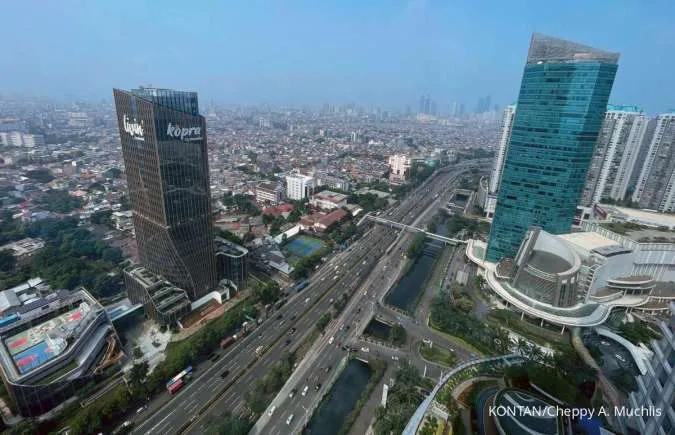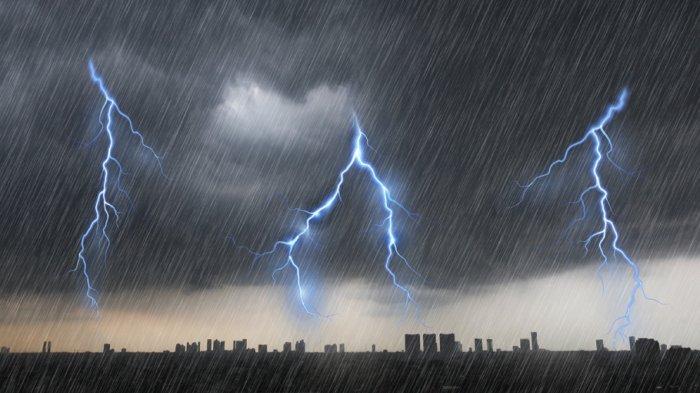Climate Whiplash Impacts: A Global Urban Crisis

Table of Contents
Increased Frequency of Extreme Weather Events & Urban Infrastructure
Climate whiplash overwhelms urban infrastructure designed for more predictable weather patterns. The rapid succession of extreme events – for example, a flash flood immediately following a prolonged drought – puts immense strain on systems ill-equipped to handle such volatility. This results in widespread damage and significant disruption to daily life.
- Damage to roads, bridges, and transportation systems: Heavy rainfall after a period of drought can cause landslides and road collapses, disrupting transportation networks and isolating communities. Extreme heat can buckle roads and damage railway lines.
- Overburdened drainage and sewage systems leading to flooding: Intense rainfall following dry spells overloads drainage systems, resulting in widespread flooding, contaminating water supplies and damaging property.
- Power outages and disruptions to essential services: Extreme weather events, including strong winds and heavy rainfall, frequently cause power outages, impacting essential services like hospitals, communication networks, and water treatment plants.
- Increased risk of landslides and building collapses: Rapid shifts in weather patterns can destabilize slopes, increasing the risk of landslides that damage buildings and infrastructure. Extreme heat can also weaken building foundations, increasing vulnerability during subsequent extreme weather events.
Cities around the globe are already experiencing the devastating effects. For example, many developing nations face frequent flash floods after periods of drought, while major cities experience crippling heat waves followed by intense storms. The unpredictability of climate whiplash makes effective planning and disaster response exceedingly difficult.
Public Health Impacts of Climate Whiplash in Urban Areas
The unpredictable nature of climate whiplash poses significant threats to public health within urban populations. The rapid transitions between extreme weather conditions exacerbate existing health vulnerabilities and create new ones.
- Heatstroke and heat-related illnesses during sudden heatwaves: Heatwaves following periods of cooler weather can catch populations unprepared, leading to a spike in heatstroke cases and other heat-related illnesses, particularly among vulnerable populations like the elderly and those with pre-existing health conditions.
- Spread of waterborne diseases due to flooding and contamination: Flooding following periods of drought contaminates water supplies, leading to outbreaks of waterborne diseases like cholera and typhoid.
- Respiratory problems from poor air quality exacerbated by extreme weather: Wildfires, dust storms, and other extreme weather events associated with climate whiplash worsen air quality, triggering respiratory problems such as asthma and bronchitis.
- Mental health impacts of repeated trauma and displacement: The repeated trauma and displacement caused by climate whiplash events can lead to increased rates of anxiety, depression, and post-traumatic stress disorder (PTSD).
The lack of consistent data makes quantifying the exact health impacts challenging. However, existing research strongly suggests a significant correlation between climate whiplash events and increased morbidity and mortality rates in urban areas.
Economic Consequences of Climate Whiplash on Urban Economies
Climate whiplash events inflict substantial economic damage on urban economies, disrupting businesses, damaging infrastructure, and impacting livelihoods. The costs are far-reaching and often disproportionately affect vulnerable populations.
- Damage to property and businesses: Flooding, strong winds, and heatwaves cause significant damage to buildings, businesses, and infrastructure, leading to substantial repair and replacement costs.
- Disruption to supply chains and trade: Extreme weather events can disrupt transportation networks, impacting the timely delivery of goods and services, leading to economic losses and inflationary pressures.
- Increased insurance costs and financial burdens on municipalities: The rising frequency and severity of climate whiplash events increase insurance premiums for individuals and businesses, placing a significant financial burden on municipalities tasked with disaster response and recovery.
- Loss of tourism revenue: Extreme weather events can deter tourists, leading to a significant loss of revenue for urban economies that rely heavily on tourism.
- Job losses and economic stagnation: Damage to businesses and disruption to economic activity lead to job losses and hinder economic growth, creating a cycle of poverty and vulnerability.
Vulnerable populations and economies bear the brunt of these impacts, exacerbating existing inequalities.
Adaptation and Mitigation Strategies for Urban Climate Resilience
Building urban resilience against climate whiplash requires a multi-pronged approach encompassing both adaptation and mitigation strategies.
- Investing in resilient infrastructure: This includes constructing flood defenses, developing early warning systems for extreme weather events, and designing infrastructure to withstand intense heat and strong winds.
- Implementing sustainable urban planning and design: Creating green spaces, using permeable pavements to manage stormwater runoff, and improving urban ventilation to mitigate heat island effects are crucial.
- Improving disaster preparedness and response mechanisms: This involves developing comprehensive emergency plans, training first responders, and establishing effective communication networks to ensure rapid and coordinated responses during extreme weather events.
- Promoting climate change education and awareness: Raising public awareness about the risks of climate whiplash and the importance of individual and collective actions is crucial for fostering behavioral change and community resilience.
- Investing in renewable energy and reducing carbon emissions: Mitigation efforts to reduce greenhouse gas emissions are critical in reducing the frequency and intensity of extreme weather events.
Cities like Rotterdam (Netherlands) with its advanced water management systems, and Singapore with its green infrastructure initiatives, exemplify successful adaptation strategies. However, a global effort is needed to ensure urban resilience to climate whiplash.
Conclusion
Climate whiplash poses a grave threat to global urban centers. The increased frequency and intensity of extreme weather events are causing widespread damage to infrastructure, impacting public health, and disrupting economies. The consequences are far-reaching and disproportionately affect vulnerable populations. Addressing the challenges posed by climate whiplash is crucial for creating sustainable and resilient urban futures. We need urgent global cooperation and significant investment in climate change adaptation and mitigation strategies to reduce the devastating effects of climate whiplash and build cities that can withstand the impacts of a rapidly changing climate. Learn more about climate whiplash and support initiatives dedicated to building more resilient cities. The future of our urban landscapes depends on it.

Featured Posts
-
 Arsenals Transfer Blow Striker Set For Liverpool Switch
May 28, 2025
Arsenals Transfer Blow Striker Set For Liverpool Switch
May 28, 2025 -
 Prakiraan Cuaca Bali Besok Berawan Hujan Ringan Di 5 Daerah
May 28, 2025
Prakiraan Cuaca Bali Besok Berawan Hujan Ringan Di 5 Daerah
May 28, 2025 -
 Ronaldo Ya Fenerbahce Daveti Danimarka Dan Gelen Suerpriz
May 28, 2025
Ronaldo Ya Fenerbahce Daveti Danimarka Dan Gelen Suerpriz
May 28, 2025 -
 Alejandro Garnacho Weighing Up His Manchester United Future
May 28, 2025
Alejandro Garnacho Weighing Up His Manchester United Future
May 28, 2025 -
 Jawa Timur Dilanda Hujan Petir Peringatan Cuaca 29 Maret 2024
May 28, 2025
Jawa Timur Dilanda Hujan Petir Peringatan Cuaca 29 Maret 2024
May 28, 2025
